Will Baking With Ice Give You Better Sourdough Bread?
This post may contain affiliate links.
Many sourdough bakers swear by adding a few ice cubes to their Dutch Oven when they place the bread inside. But does this "ice trick" really deliver better sourdough bread?
This article aims to show you both the pros and cons to adding ice to your Dutch Oven when baking sourdough so you can make an informed decision.
There are so many tips and tricks in the world of sourdough, it really can be hard to know which method is best.
So will baking with ice give you better sourdough bread?
Here's what you need to know about adding ice when baking sourdough bread:
- Don't add more than 4 ice cubes
- Ice will lower the temperature inside the Dutch Oven
- Crust formation is delayed by adding ice
- Ice may help improve under fermented dough
- Ice doesn't work for over fermented dough
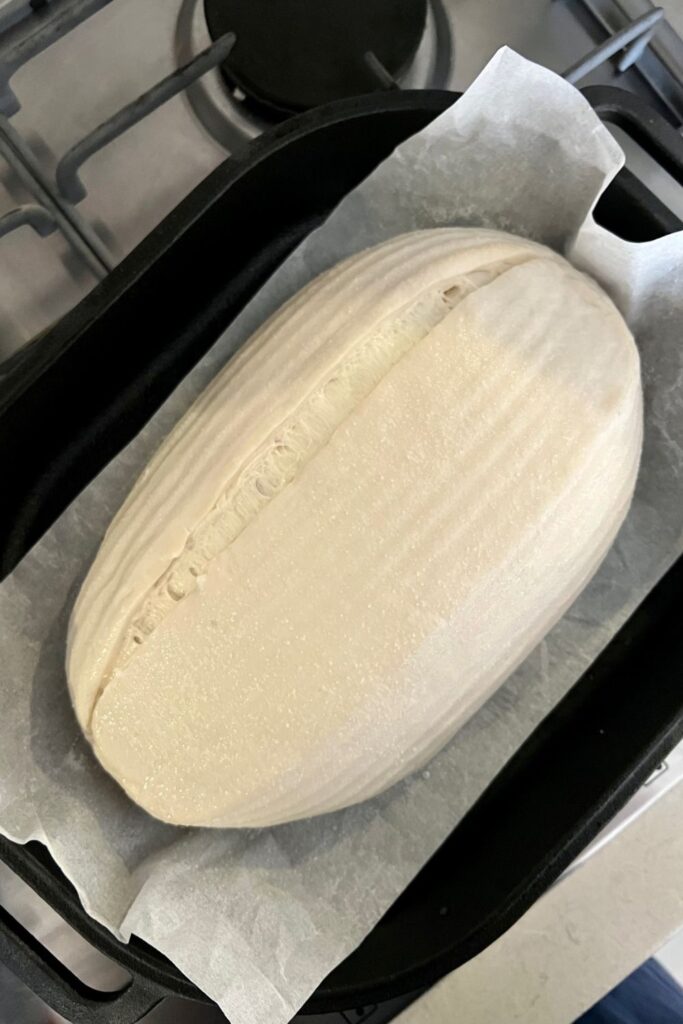
What Does Adding Ice To Your Dutch Oven Do When Baking Sourdough?
Adding ice cubes to the Dutch Oven when baking sourdough bread introduces steam to the vessel. It also reduces the temperature of the vessel for the first part of baking. This allows the dough to expand as much as possible before the crust starts to form.
Delaying the crust formation can increase oven spring and deliver a more open crumb sourdough bread.
To ensure that the crust does form correctly, you need to ensure that you remove the lid of the Dutch Oven and cook the sourdough bread with the lid off for the last part of the bake.
Doing this allows the crust to crisp up and set.
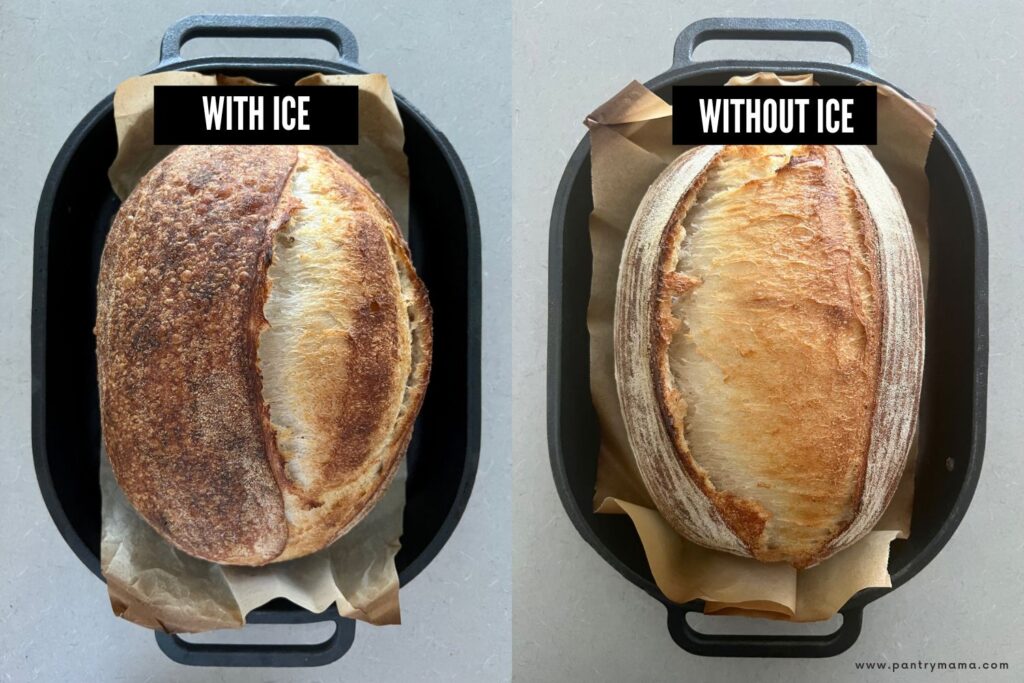
This photo shows two loaves of sourdough, both baked in the same cast iron pan. The ice made the one on the left a little flatter, but with a rounder belly and more sourdough blisters. The loaf on the right was baked without ice and it had a cleaner split and bigger belly overall. The loaf on the right was not sprayed with any water before baking.
How Else Can You Add Steam To Your Dutch Oven?
Using a Dutch Oven for baking sourdough bread ensures that the moisture in the dough is trapped inside the vessel.
While it's not essential to add extra moisture to the dough before placing it inside the Dutch Oven, extra moisture is generally a good thing when it comes to sourdough.
Another option for adding extra moisture to the dough before baking is to liberally spray the dough with water before placing it inside the Dutch Oven.
You can spray with an atomiser or even paint water on the dough with a pastry brush.
This is a common method to increase the blisters that form on the sourdough crust.
Pros & Cons of Adding Ice To Dutch Oven
While there are advantages to adding ice to your Dutch Oven, there are also a few pitfalls that you should be aware of.
Advantages:
- Decreases temperature of vessel temporarily, while adding steam, which delays crust formation.
- Increases oven spring.
- Can result in bigger sourdough belly and ear.
Disadvantages:
- Risk of cracking pot or Dutch Oven
- Can result in sticky, uncooked dough
- Risk of misshapen dough (can make dough flatter)
- Can make parchment paper stick to your dough or bake into the base of your dough.
As you can see in the photo below, the sides of the bread have stayed pale, gummy and under baked because the dough has become too wet during the cooking process.
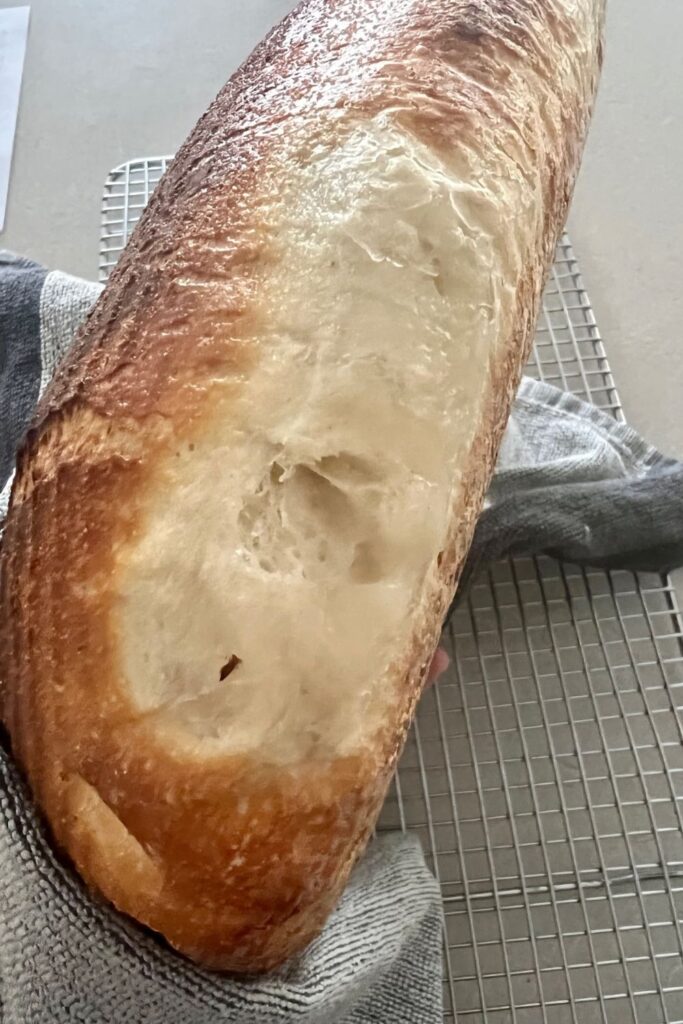
How Much Ice Should You Use?
When using a Dutch Oven, you don't need a lot of ice. I recommend adding no more than 4 average size ice cubes to the pot. Adding more than this can cause the dough to become too wet and not crisp up at all.
If you would like to add ice to your Dutch Oven when baking sourdough bread, it's important not to use too much.
When baking sourdough without a Dutch Oven, you can add a whole tray of ice to the oven because it's a much bigger space. The residual water is also removed towards the end of cooking time.
Does The Shape of The Dutch Oven Make A Difference?
You can add ice to any size and shape Dutch Oven. You just need to make sure that your dough fits comfortably inside and will not expand too much and touch the sides.
I have baked sourdough in many different Dutch Ovens - from oval to round and many sizes in between.
I have had the best results using ice in my covered cast iron bread pan.
I found that the dough had more room to bake without touching the sides of the pan and the ice didn't make the edges of the bread gummy at all when using ice in this pan.
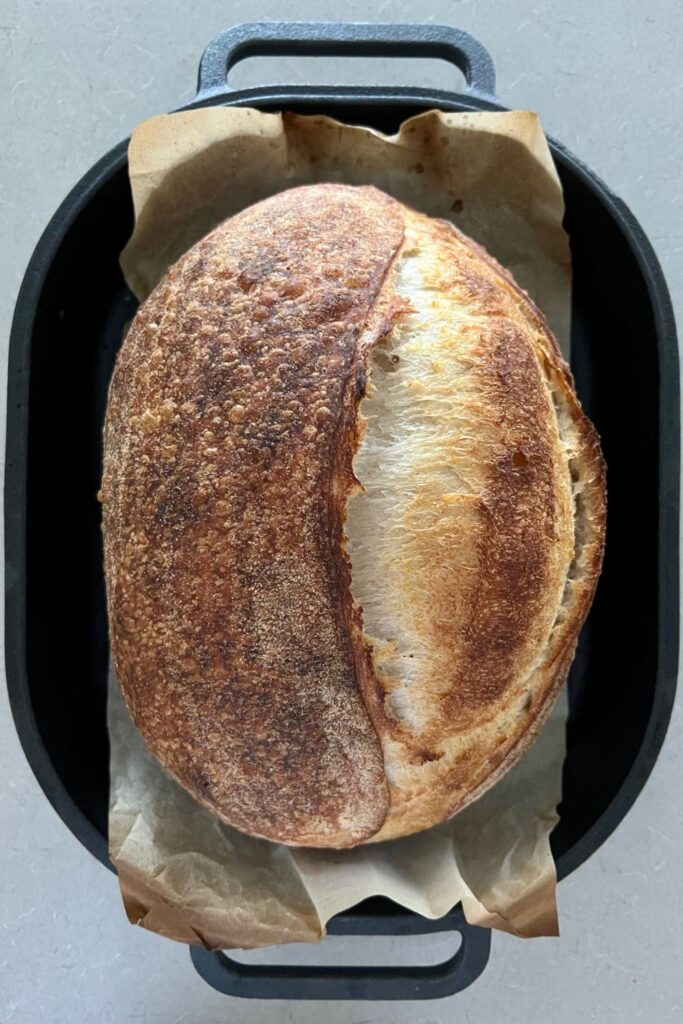
Best Tips for Using Ice In Your Dutch Oven
If you do decide to add ice to your Dutch Oven when baking sourdough bread, there are a few things you can do to ensure you have success:
- Make sure that the sourdough bread will not touch the inside of the Dutch Oven while baking. If you use ice and the bread expands to touch the sides of the pot it can result in a gummy crust.
- Do not use too much ice, up to 4 cubes is plenty.
- Do not use ice if you have done decorative scoring. The steam from the ice will dissolve the flour on the surface of the dough and you won't be able to see the scoring as much when the bread is baked.
- Be very careful when adding ice to a hot Dutch Oven. The ice will start to melt immediately creating steam which can easily burn your arms. It's a good idea to wear long, heat resistant gloves when handling a hot Dutch Oven.
- Make sure that you give the bread adequate "lid off" bake time to ensure that the ice cubes have completely evaporated and the crust has time to get crispy.
- To make sure that you get the best crust possible, once the bread is baked, remove it from the Dutch Oven and place it directly on the oven racks. Turn the oven off and allow the bread to cool in there with the door slightly ajar.
- Use good quality parchment paper if you are using ice. Non stick parchment or baking paper is best. If you use cheap stuff it will often bake into the base of your bread.
Does Using Ice Help Sourdough Fermentation?
Using ice in the Dutch Oven will not help with fermentation, since your dough has already been fermented during the bulk ferment and cold ferment. However, adding ice into the Dutch Oven can assist under fermented dough to rise better.
Because ice lowers the temperature inside of the Dutch Oven, the bread continues to ferment a little before it springs up when the Dutch Oven comes back to temperature.
This means that if your dough is under fermented, a little ice can help to give you a better result once baked.
Using ice is not recommended for over fermented dough, since the dough will continue to ferment once the ice lowers the temperature inside the Dutch Oven.
Is Spraying Your Dough Better Than Adding Ice?
I prefer to spray or spritz my dough with an atomiser rather than adding ice to the Dutch Oven. I find it easier to spray my dough while it's on the parchment paper on my counter and then transfer that to a HOT Dutch Oven.
However, I still think there is a place for adding ice. Like most things sourdough, you find the methods that work best for your kitchen, your starter, your lifestyle.
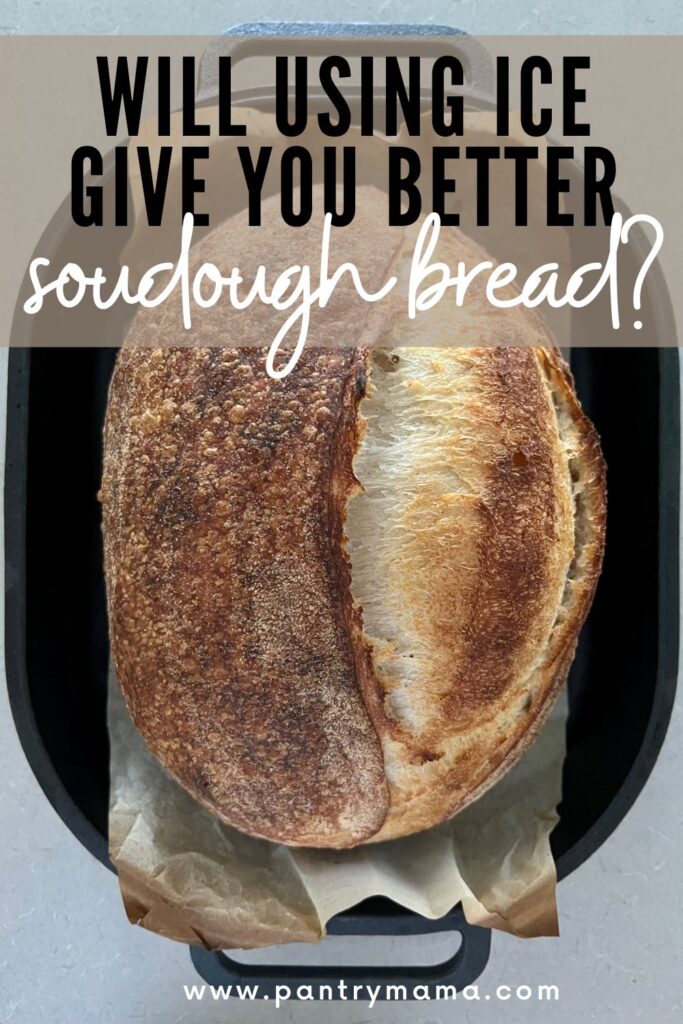
Frequently Asked Questions
No, adding ice will not always result in a sourdough ear. An ear occurs as a culmination of many factors including fermentation, shaping and scoring. Ice in the Dutch Oven can contribute to the ear because it is creating steam, but it's not essential or necessary.
Sourdough can burn when it directly touches cast iron or ceramic. Sourdough with added honey or sugar can burn more quickly than dough without additives. Adding a cookie tray underneath your Dutch Oven can stop the base from burning. You'll find full instructions for this here.
Yes you can bake your sourdough straight from the fridge. So long as you have completed the bulk ferment sufficiently, there is no need to allow the dough to come to room temperature before placing it into the oven. Placing cold dough into the hot Dutch Oven will give you the best chance at oven spring.
I recommend baking sourdough for 30 Minutes with the lid on at 230C/450F plus 10-15 Minutes with the lid off at 210C/410F. This is for a loaf containing 500g of flour and 350g of water.


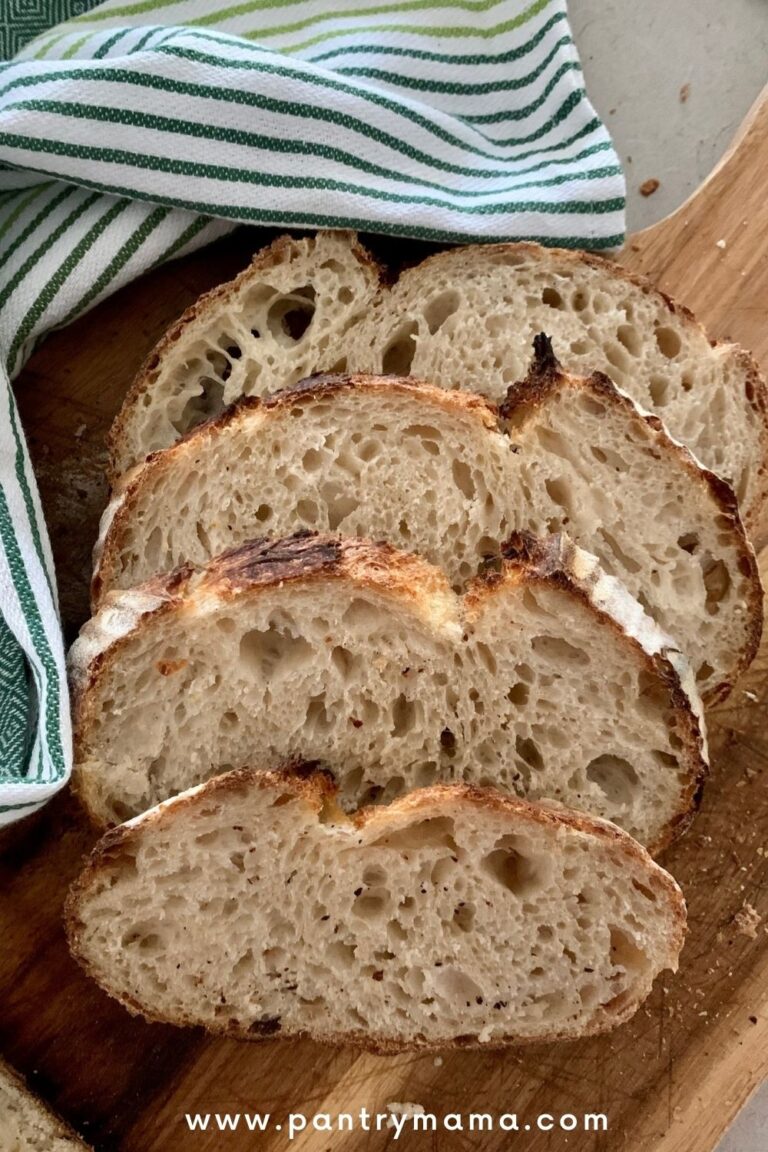


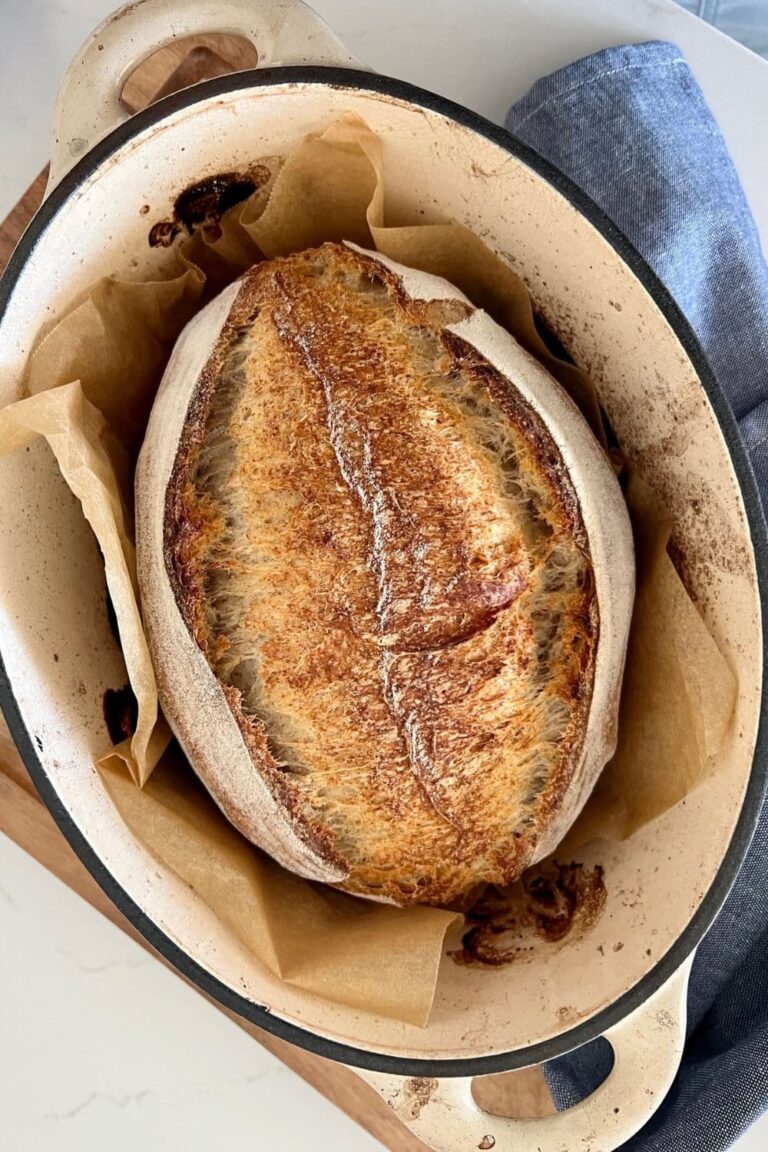

I spritz the top of my loaf with some water right before covering with the lid. Does it make a difference. A little.
Like so many other types of recipes, sourdough is way overthought. Mix it, knead it, ferment it, bake it, slap the butter on it and enjoy it.
K.I.S.S.!
My worst loaf was delicious.
Thanks for clarifying the ice issue! I have been adding a LOT of ice to every bake. Youe article was very helpful, and I will be changing my ways.
I have read different opinions on whether adding ice or spraying water into the DO can crack the pot. I use a cast iron, not enamel coated, DO. Can putting ice into the hot pot cause it to crack?
Thank you!